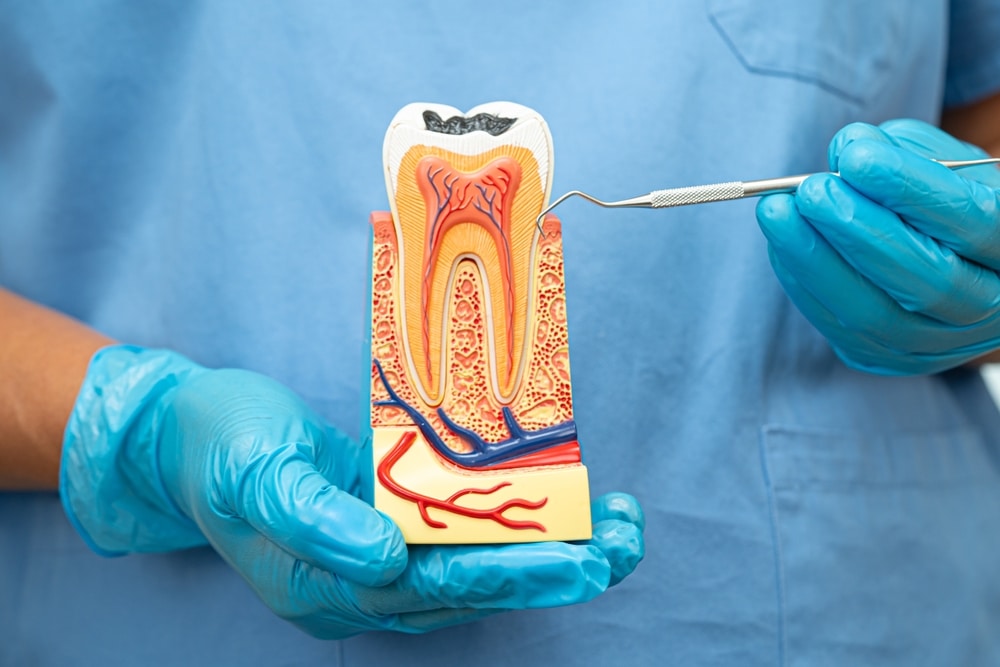Deciding Between a Root Canal and Tooth Extraction: What’s Best for Your Dental Health?
When you’re hit with tooth pain, the dilemma often boils down to two choices: should you undergo a root canal to save your tooth, or is it smarter to just extract it? Each option has its own purpose of relieving discomfort and preventing infections from spreading further. However, these two procedures are not only different in approach, but they also carry varying consequences for your dental health in the long run. Let’s break down the key points you need to consider when making this important decision.
Understanding Root Canal Treatment
At its core, a root canal treatment is designed to rescue a tooth that’s become seriously damaged or is battling infection. Imagine your tooth as a fortress, and inside it holds the vulnerable pulp. During a root canal, your dentist carefully removes that infected pulp, cleans and disinfects the hollow space, and then fills it to seal it up. This procedure does more than just ease your pain; it also keeps your tooth intact, meaning you get to hang on to its natural form and function. In the conflict between root canals and tooth extractions, opting for a root canal is like choosing to keep your tooth’s strong foundation.
Benefits of Root Canal Treatment
– Saving Your Natural Tooth: The biggest perk of a root canal is that you get to save your natural tooth. This isn’t just about aesthetics; keeping your original tooth helps prevent nearby teeth from shifting and maintains your bite alignment. It’s all about keeping that natural harmony in your mouth.
– Long-term Savings: Yes, the upfront cost of a root canal might seem steeper than getting a tooth pulled. But think of it like this: while a tooth extraction may seem cheaper, you might end up spending more down the road on replacements like implants or bridges. It’s about investing in your future smile.
– Looks and Feels Like a Real Tooth: After a root canal, the treated tooth functions just like its natural counterpart. You’ll still be able to flash your smile confidently and chew with ease.
– Quicker Recovery: Most people find they can get back to their usual activities the very next day after a root canal. Generally speaking, the recovery is faster and less uncomfortable compared to what you might experience after an extraction.
Possible Disadvantages
– Multiple Hospital Visits: Don’t be surprised if you have to go in for a couple of appointments to finish the treatment; a root canal isn’t always a one-and-done deal.
– Chance of Retreatment: In some rare cases, if your dentist struggles to thoroughly clean the infected area, you might need to go through the process again later on.
– Weakened Tooth Structure: It’s true that a tooth that’s had a root canal might be more prone to cracking. But don’t worry—often, a sturdy crown can help fortify it.
Tooth Extraction Explained
Tooth extraction is the process of removing a problematic tooth from your jawbone. It’s typically the route taken when a tooth is too damaged to be saved, whether due to decay or misalignment.
Advantages of Tooth Extraction
– Quick Fix: If you crave immediate relief, extraction offers a fast way to get rid of the pesky tooth that’s causing you pain.
– Simpler Process: Removing a tooth is generally less complicated than undergoing a root canal.
– Lower Initial Cost: If you’re looking for a budget-friendly short-term solution, extraction typically isn’t as pricey upfront.
Disadvantages
– Loss of Your Natural Tooth: The most glaring downside of tooth extraction is that you’re saying goodbye to a piece of your natural anatomy.
– Alignment Issues: Removing a tooth can lead to gaps that may cause neighboring teeth to drift, which might result in bite misalignment and additional dental troubles.
– Need for Replacement: You might soon find yourself in need of replacing that missing tooth, whether it’s through a bridge or implant, leading to more expenses and procedures.
– Longer Recovery Time: Generally, you should expect a lengthier recovery, with possibly more discomfort post-extraction compared to a root canal.
– Bone Loss: Long-term, your jawbone could suffer from a lack of stimulation and start to lose density over time when a tooth is extracted.
Factors to Consider in Your Decision
Tooth Condition: Evaluate how damaged your tooth is. If it’s possible to save it, a root canal is usually the better choice. If it’s too far gone, extraction might be your only option.
Long-Term Oral Health: Consider the ramifications for your overall oral health. Root canals help you keep your tooth anchored in place and lower the risks of complications, like shifting teeth or bone loss, that could arise from extraction.
Financial Considerations: While an extraction may appear less expensive at first, think about future expenses prompted by needing dental replacements. Root canals often turn out to be more cost-effective in the long term.
Pain and Recovery: Both procedures come with some discomfort, but thanks to advances in dental medicine, they’re less painful than they used to be. A root canal generally means a quicker and easier recovery compared to extraction.
Aesthetic Considerations: If the affected tooth is on display when you smile, keeping it through a root canal might make more sense from an aesthetic perspective.
Long-term Success Rates
Looking at the data, root canal treatments have shown impressive success rates. A 2023 study noted that treated teeth have a cumulative survival rate of 97% at 10 years, 81% at 20 years, 76% at 30 years, and 68% at 37 years. This evidence shows that for many patients, root canal treatment serves as a solid, long-lasting solution.
Making Your Treatment Choice
Ultimately, deciding between a root canal and a tooth extraction boils down to numerous factors, like how seriously your tooth is damaged, your overall dental health, and your personal preferences. It’s so important to have an open dialogue with your dentist about your situation.
As you weigh your options, consider asking your dentist some important questions:
– Can we save my tooth with a root canal?
– What are the long-term effects of both choices?
– How will each option impact my oral health and chewing functionality?
– What are the financial implications, including any potential future treatments?
– What will recovery look like for each procedure?
Keep in mind, preserving your natural teeth should generally be the goal for lasting oral health. The positive long-term outlook for teeth treated via root canals should encourage both dentists and patients alike to consider saving teeth over extracting them whenever feasible.
In summary, while both root canals and extractions have their place in dental care, root canals often offer greater opportunities for maintaining your natural teeth and their functions. Each case is unique, so take the time to work closely with your dental care provider. Assessing all aspects of your oral health will empower you to make a knowledgeable decision that serves your long-term dental well-being.
















